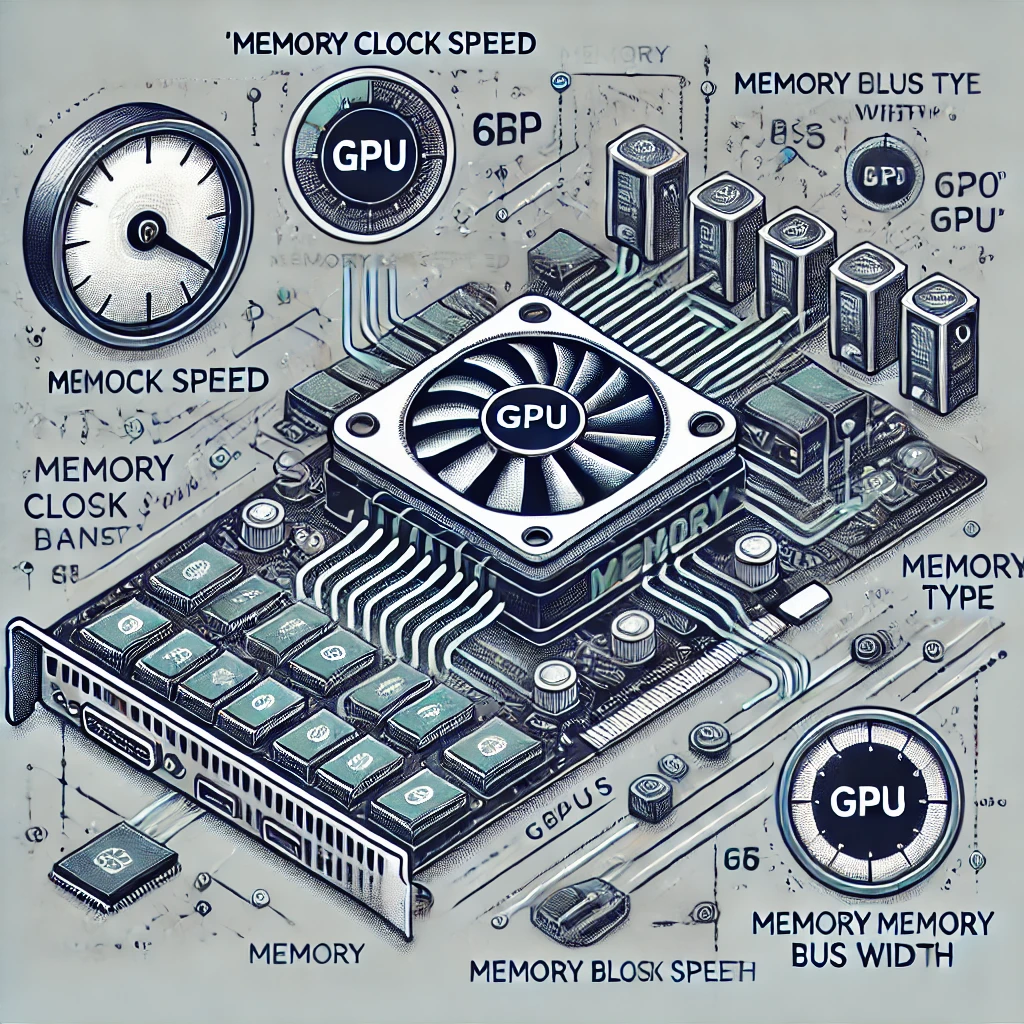What is Memory Bandwidth?
In the world of high-performance computing, certain terms are essential to understand, and one such term is “memory bandwidth.” Particularly when discussing GPUs (Graphics Processing Units), memory bandwidth plays a crucial role in determining the efficiency and performance of these devices. So, what is memory bandwidth, and why is it so vital for GPUs? Let’s delve into the details.
Understanding Memory Bandwidth
Memory bandwidth refers to the rate at which data can be read from or written to the GPU’s memory. It’s typically measured in gigabytes per second (GB/s). Essentially, it indicates how much data the GPU can handle in a given amount of time. Higher memory bandwidth means the GPU can process more data faster, which is critical for performance-intensive tasks like gaming, video editing, and running complex simulations.
To better understand the concept, High memory bandwidth in a GPU refers to the ability to transfer large amounts of data quickly between the GPU and its memory. This is crucial for performance-intensive tasks such as 4K gaming, video editing, and running complex simulations. High memory bandwidth ensures smooth gameplay, faster rendering times, and efficient data processing, which is essential for applications that demand high graphical detail and large datasets. For instance, in gaming, high memory bandwidth allows for higher frame rates and detailed textures, providing an immersive experience. In professional applications like 3D rendering or AI processing, it enables quicker execution and higher productivity.
On the other hand, Low memory bandwidth can create a bottleneck, slowing down data transfer and reducing overall performance. This can result in lower frame rates in games, longer rendering times in video editing, and slower processing of large datasets in scientific simulations. For gamers, this might mean experiencing lag or lower graphical settings to maintain performance. For professionals, it can lead to decreased efficiency and productivity. Understanding the importance of memory bandwidth and ensuring your GPU meets the requirements of your tasks is vital for achieving optimal performance.

The Role of Memory Bandwidth in GPU Performance
To grasp the importance of memory bandwidth, it’s essential to understand how a GPU works. The GPU processes vast amounts of data to render images, perform calculations, and execute tasks. This data needs to move quickly between the GPU and its memory. If the data transfer rate is slow, the GPU will spend more time waiting for data, leading to reduced performance.
For instance, in gaming, high memory bandwidth allows for smoother gameplay with higher frame rates, better texture quality, and more detailed environments. In video editing, it enables faster rendering times and more efficient processing of high-resolution video files.
Here’s a table that highlights the memory bandwidth requirements for different applications and games, providing a clear understanding of how much memory bandwidth is needed for various tasks:
| Application/Game | Recommended Memory Bandwidth |
|---|---|
| 1080p Gaming (e.g., Fortnite, Apex Legends) | 100 – 150 GB/s |
| 1440p Gaming (e.g., Assassin’s Creed Valhalla) | 200 – 250 GB/s |
| 4K Gaming (e.g., Cyberpunk 2077, Red Dead Redemption 2) | 300 – 400+ GB/s |
| Video Editing (4K) | 200 – 300 GB/s |
| 3D Rendering (e.g., Blender, Maya) | 250 – 350 GB/s |
| AI and Machine Learning | 300+ GB/s |
| Scientific Simulations | 300+ GB/s |
Key Factors Influencing Memory Bandwidth
Several factors determine the memory bandwidth of a GPU:
- Memory Type: Different types of memory (e.g., GDDR5, GDDR6, HBM2) offer varying speeds and efficiencies. Newer memory types typically provide higher bandwidth.
- Memory Clock Speed: This is the speed at which the memory operates. Higher clock speeds generally translate to higher memory bandwidth.
- Memory Bus Width: The width of the memory bus, measured in bits, also affects bandwidth. A wider bus allows more data to be transferred simultaneously.
- Number of Memory Channels: More channels mean more pathways for data to travel, increasing overall bandwidth.
![]()
Practical Implications of Memory Bandwidth
Understanding memory bandwidth can help you make informed decisions when choosing a GPU for your specific needs. For example, if you’re a gamer looking for smooth 4K gaming experiences, you’ll need a GPU with high memory bandwidth to handle the detailed textures and high frame rates. Similarly, professionals working with 3D rendering or AI applications will benefit from GPUs with higher memory bandwidth to process large datasets efficiently.
Optimizing Your GPU’s Memory Bandwidth
There are several ways to optimize and improve the memory bandwidth of your GPU:
- Upgrade Your GPU: If your current GPU is struggling with modern applications, upgrading to a newer model with higher memory bandwidth can make a significant difference.
- Optimize Software Settings: Sometimes, tweaking the settings of your applications and games can help manage memory usage more effectively, leading to better performance.
- Overclocking: For advanced users, overclocking the GPU and its memory can boost performance. However, this should be done cautiously to avoid overheating and potential damage.
- Use Multiple GPUs: In professional environments, using multiple GPUs can effectively increase overall memory bandwidth, providing a performance boost for demanding tasks.
Conclusion
Memory bandwidth is a critical aspect of GPU performance, influencing everything from gaming graphics to professional video editing and scientific simulations. High memory bandwidth ensures smooth gameplay, faster rendering times, and efficient data processing, while low memory bandwidth can create bottlenecks and reduce overall performance. By understanding what memory bandwidth is and why it matters, you can make informed choices about your hardware, ensuring you get the best performance for your needs.
For a deeper dive into hardware upgrades, check out this detailed overview on whether you should upgrade your GPU or CPU first. Stay tuned for more insights and tips on optimizing your computing experience.
Do check this article if you want to adjust GPU Memory Bandwidth Tradeoffs.
FAQs
What Does Memory Bandwidth Do?
Memory bandwidth ensures data flows smoothly between the GPU and its memory, enabling rapid processing for tasks like gaming and video editing that involve large datasets or real-time processing.
Does Memory Bandwidth Affect FPS?
Yes, higher memory bandwidth can significantly improve FPS by preventing bottlenecks, ensuring data is processed quickly, and resulting in smoother gameplay.
What is Bandwidth in a Graphic Card?
Bandwidth in a graphics card refers to the data transfer rate between the GPU and its memory, influenced by memory clock speed, type, and bus width, impacting overall performance.
How Much Memory Bandwidth Do I Need for Gaming?
For 1080p gaming, at least 150 GB/s is recommended, while higher resolutions like 1440p or 4K, or games with high settings, may require 250 GB/s or more for smooth gameplay.
